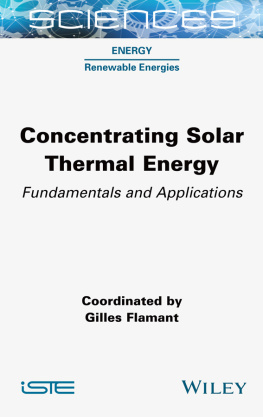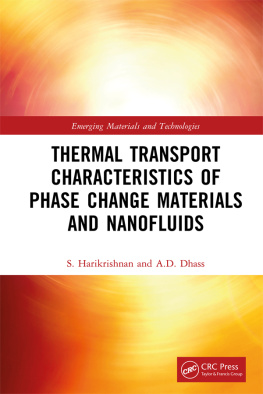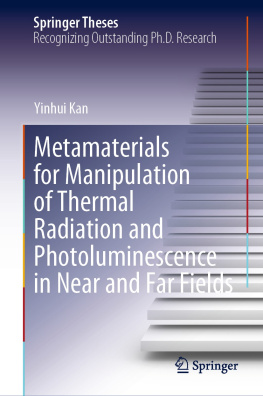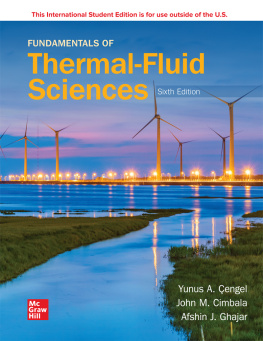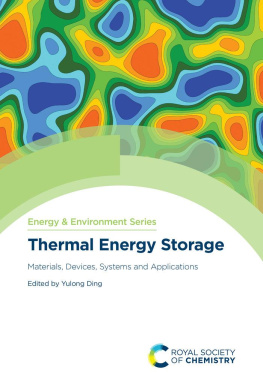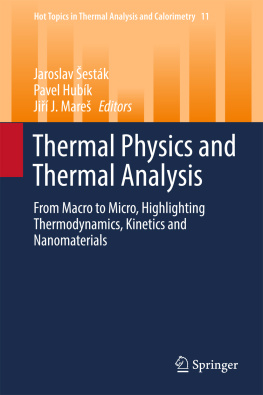
The Art of Measuring in
the Thermal Sciences
Heat Transfer
Series Editor:
Afshin J. Ghajar
Regents Professor, School of Mechanical and Aerospace Engineering, Oklahoma State University
A SERIES OF REFERENCE BOOKS AND TEXTBOOKS
Engineering Heat Transfer, Third Edition
William S. Janna
Conjugate Problems in Convective Heat Transfer
Abram S. Dorfman
Thermal Measurements and Inverse Techniques
Helcio R.B. Orlande, Olivier Fudym, Denis Maillet, and Renato M. Cotta
Introduction to Thermal and Fluid Engineering
Allan D. Kraus, James R. Welty, and Abdul Aziz
Advances in Industrial Heat Transfer
Alina Adriana Minea, Editor
Introduction to Compressible Fluid Flow, Second Edition
Patrick H. Oosthuizen and William E. Carscallen
District Cooling: Theory and Practice
Alaa A. Olama
Advances in New Heat Transfer Fluids
From Numerical to Experimental Techniques
Alina Adriana Minea, Editor
Finite Difference Methods in Heat Transfer
M. Necati ziik, Helcio R.B. Orlande, Marcelo J. Colao, and Renato M. Cotta
Convective Heat and Mass Transfer, Second Edition
S. Mostafa Ghiaasiaan
The Art of Measuring in Thermal Sciences
Josua P. Meyer and Michel De Paepe
The Art of Measuring in the Thermal Sciences
Edited by
Josua P. Meyer and Michel De Paepe

MATLAB is a trademark of The MathWorks, Inc. and is used with permission. The MathWorks does not warrant the accuracy of the text or exercises in this book. This books use or discussion of MATLAB software or related products does not constitute endorsement or sponsorship by The MathWorks of a particular pedagogical approach or particular use of the MATLAB software.
First edition published 2021
by CRC Press
6000 Broken Sound Parkway NW, Suite 300, Boca Raton, FL 33487-2742
and by CRC Press
2 Park Square, Milton Park, Abingdon, Oxon, OX14 4RN
2021 Taylor & Francis Group, LLC
CRC Press is an imprint of Taylor & Francis Group, LLC
Reasonable efforts have been made to publish reliable data and information, but the author and publisher cannot assume responsibility for the validity of all materials or the consequences of their use. The authors and publishers have attempted to trace the copyright holders of all material reproduced in this publication and apologize to copyright holders if permission to publish in this form has not been obtained. If any copyright material has not been acknowledged please write and let us know so we may rectify in any future reprint.
Except as permitted under U.S. Copyright Law, no part of this book may be reprinted, reproduced, transmitted, or utilized in any form by any electronic, mechanical, or other means, now known or hereafter invented, including photocopying, microfilming, and recording, or in any information storage or retrieval system, without written permission from the publishers.
For permission to photocopy or use material electronically from this work, access
Trademark notice: Product or corporate names may be trademarks or registered trademarks, and are used only for identification and explanation without intent to infringe.
ISBN: 978-0-367-19290-7 (hbk)
ISBN: 978-0-429-20162-2 (ebk)
Typeset in Palatino
by codeMantra
We are proud to present our first book resulting from years of cooperation. The idea for this book emerged from the sabbatical stay of Michel De Paepe at the University of Pretoria with Josua P. Meyer in 2018.
This book is aimed at providing scholars, students, and people from industry a scholarly, state-of-the-art overview of good practices for conducting correct and sound measurements in thermal sciences. All the material in the book is original, was written by academic experts in the field, and has not been published before. Every chapter was peer-reviewed for originality by independent reviewers, who are distinguished subject specialists in the field of the relevant chapter.
It is a guide for people who want to conduct advanced thermal experiments. The types of experiments discussed in the book are common in modern research and the development of thermal systems in the industries of energy generation, transport, manufacturing, mining, processes, HVAC, biomedical engineering, etc. Most of what we currently know about thermal sciences has been learnt by observation and proper data reduction (deduction).
These days, many thermal science problems are being solved numerically on large grids using the tools of computational fluid dynamics. Even for these computerized simulations of physical systems, the numerical simulations in most cases depend on experimental data for validation and comparison purposes. Therefore, there is a big need for good and accurate data with known uncertainties. Since the introduction of digital measurement equipment, a lot has changed in the common practice of conducting measurements. Computers have changed the way and the amount of data we process. The possibilities and accuracies have grown much due to the advancement of electronics, but so has the complexity of our work.
Little information is found in the recent literature on how to conduct scientifically sound and correct measurements. Institutional memory and practices are being transferred from one person to another in laboratories. At conferences and in archival journals, little attention is given to this kind of craftsmanship and at most, the uncertainties and calibration techniques are reported. Fortunately, most scholarly journals require the reporting of equipment errors and uncertainties. However, this information is normally provided so succinctly that it is challenging to learn from it.
This book brings together the expertise of several research teams of the scientific thermal science community. It gives a unique overview and insight into advanced measurement techniques and systems, which are normally never published. The book goes into the fundamentals where possible and focuses on advanced measurement techniques currently used in thermal systems. It also highlights the challenges and future research opportunities for measuring practices.
We are grateful to our colleagues in the thermal engineering research field for sharing their knowledge and expertise. We consider ourselves blessed to have been able to work at and with institutes of this high level. But mostly we need to thank our students for teaching us, by hard work in our laboratories, how to make measurements come to a good end.
MATLAB is a registered trademark of The MathWorks, Inc. For product information,
please contact:
The MathWorks, Inc.
3 Apple Hill Drive
Natick, MA 01760-2098 USA
Tel: 508-647-7000
Fax: 508-647-7001
E-mail:
Web: www.mathworks.com
Josua P. Meyer is a Professor, Head of the Department of Mechanical and Aeronautical Engineering, and Chair of the School of Engineering in the Faculty of Engineering, Built Environment and Information Technology. His area of research is convective heat transfer, which relies on the engineering sciences of heat transfer, fluid mechanics, and thermodynamics. He and his students and colleagues have made it possible to predict the heat transfer characteristics in the previously unknown transitional flow regime. He has published more than 800 articles, conference papers, and book chapters in the field of thermal sciences and has successfully supervised more than 100 PhD and MSc students. He established the Clean Energy Research Group at the University of Pretoria, which now has 40 full-time postgraduate students and 13 staff members. The group members have developed, designed, and built more than ten unique, state-of-the-art experimental setups, which are being used for leading-edge heat transfer research. No other similar experimental setup exists in the world. The group conducts joint research and publishes with scholars at EPFL, MIT, Ghent, Duke, and INSA Toulouse.
Next page

